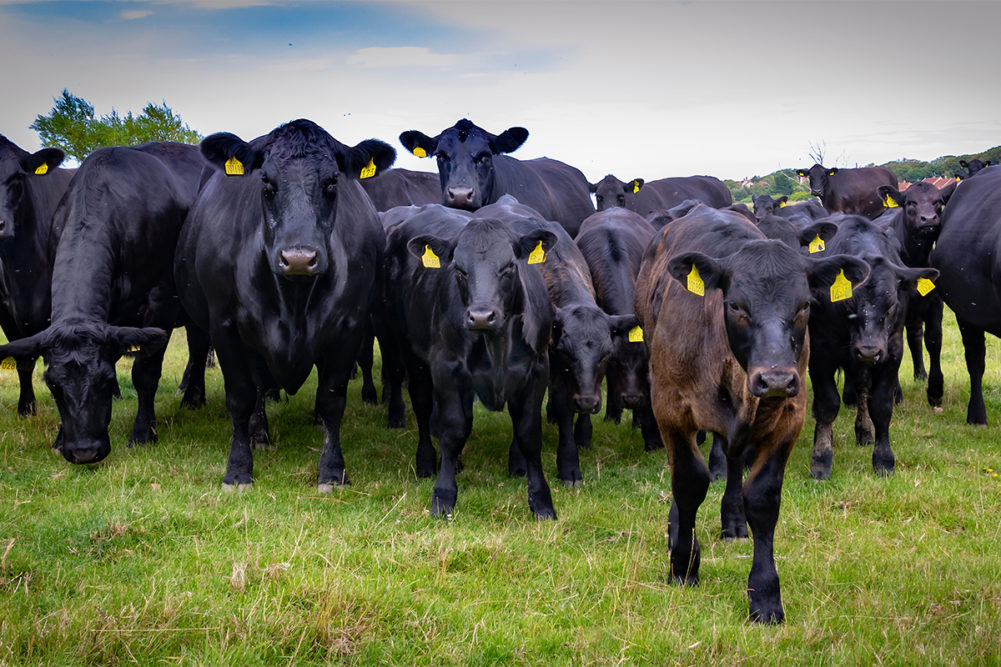NASHVILLE — Finding collaborations throughout the beef supply chain was a key focus when Greg Hanes, chief executive officer of the Beef Checkoff, and Andy Bishop, board chair of the Beef Checkoff, arrived at the Annual Meat Conference in mid-March.
Bishop said highlighting existing alliances between producers and packers was a priority throughout the Meat Conference.
“I think for me it’s looking for synergies between industry,” he said. “What are things that we’re already doing on the checkoff side, or our retailers, our processors, are already doing on the other side that we can create synergies and maybe do things a little more efficiently than we’re doing instead of replicating things over and over?”
When discussing the checkoff’s plans for 2024, Bishop remained focused on highlighting the nutritional value of beef, particularly when promoting benefits for childhood development and overall longevity for consumers.
When targeting consumers, Beef Checkoff stakeholders are exploring non-traditional methods of promoting its role and spotlighting its commitments. Tapping into social media and other forms of communication on people’s phones is one strategy for the future.
“We don’t just do big nationwide TV commercials like we did 30 years ago or 20 years ago,” Hanes said. “That’s just not cost effective. There are so many options where you advertise. It’s become very focused on this kind of target marketing.”
Hanes did note that the Beef Checkoff still serves its audience through TV advertisements, whether on the Hallmark Channel during the holidays or by sponsoring some scoreboard space at college basketball games.
In the future, a larger spend will be dedicated to social media and targeted digital marketing to reach all platforms where people are looking for information.
Observations from the Annual Meat Conference and the Beef Checkoff showed that the demand for beef is still strong. Now it’s about placing their priorities in the correct spaces around the industry.
“I think the services our contractors provide with checkoff dollars are valuable for the packers and for the marketers, the retailers that we have at this conference, because they’re obviously getting value out of that because we’re building that demand for those consumers, and we’re keeping that in front of them,” Bishop said.
With high demand, there were still some market factors to consider, including national cattle inventory being down. Beef Checkoff will continue focusing on the promotional side to bring in consumers.
“We’ve seen this coming over the last few years, so we’ve tried to plan accordingly to kind of keep that promotional level balanced as we can during this downturn. And as we start rebuilding, that’s probably even the tougher time because you have less turnover,” Hanes said. “We’re hoping we could keep that, and then as the herd rebuilds, we’ll be able to kind of ramp those up. We have been planning along those lines, just maintaining those kind of consistent programming levels through this period.”
While the cattle market is in this situation, Hanes and the checkoff know they have to continue the promotional effort and get feedback from their producers and other supply chain areas.
During the conference, attendees and other stakeholders examined opportunities for cooperation between industry players. Beef Checkoff and other organizations examined avoiding duplication of efforts and maximizing the impact of beef promotion.
One reason Hanes came to the Meat Conference was to see how the Beef Checkoff could better bridge the gap between producers and packers.
“This relationship and talking about it more really helps us kind of tie that together that we all need each other and it’s not necessarily one sector against the other,” he said. “The more communication and dialogue we can have with that the better. It put it on the table and let people say what they say and learn things they don’t really know.”
Hanes was also excited to see new products, packaging, merchandising and marketing and bring that message back to the Beef Checkoff team and the value it provides to cattle producers.


